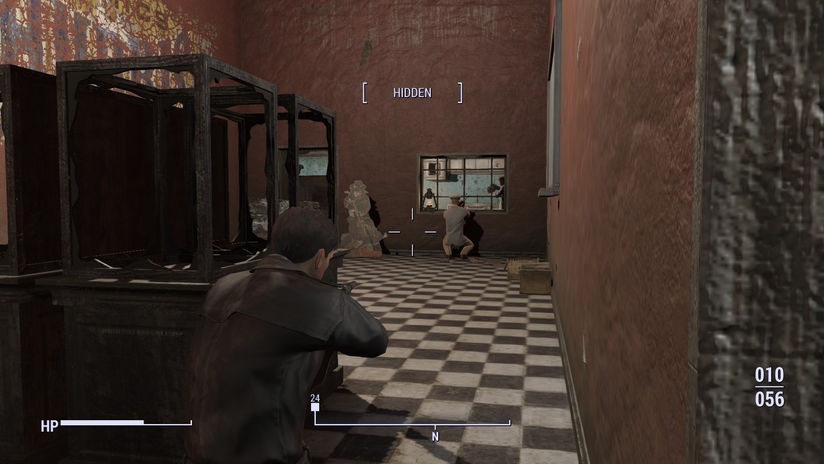Quest Designer & Level Designer
The Return of The Silver Shroud
Single-player | Creation Kit | 160 working hours
Summary
‘The Return of the Silver Shroud’ is a single-player mod designed for the game Fallout 4. In this level, players are caught in a conflict between two gangs. The Wolf gang requests the player to retrieve a crucial device essential for the town's survival from the basement of the theater. The player must then decide which gang to give the device to. The level accommodates different gameplay styles but strongly promotes stealth. The estimated play time is around 25 minutes.
Level Design Document
Play the level in FO4
Gallery
Design Goals
CLEAR CONVEYANCE
Guide the player using different invisible tools
LINEAR FLOW & REUSE SPACE
Reuse the space and save work
MULTIPLE WAYS TO PROGRESS
Support multiple ways to pass a certain point of the quest
Design Process
Clear conveyance - How do I guide the player through
o Use windows as framing tools to preview the next goal
When the player enters the second room of the theater (the gift shop), they can get a preview of the auditorium's interior and observe the enemy patrols. Based on this information, the player can strategize and plan their approach before entering the room.
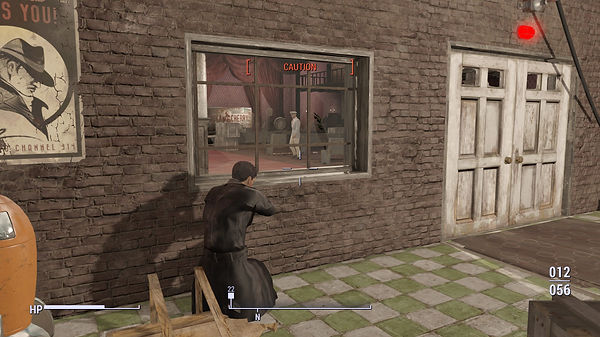
o Use motion to capture the player’s attention
At the end of the right hallway, a guard is eating noodles. The movement can grab the player's attention, making them aware of the elevator as a subgoal in that area.
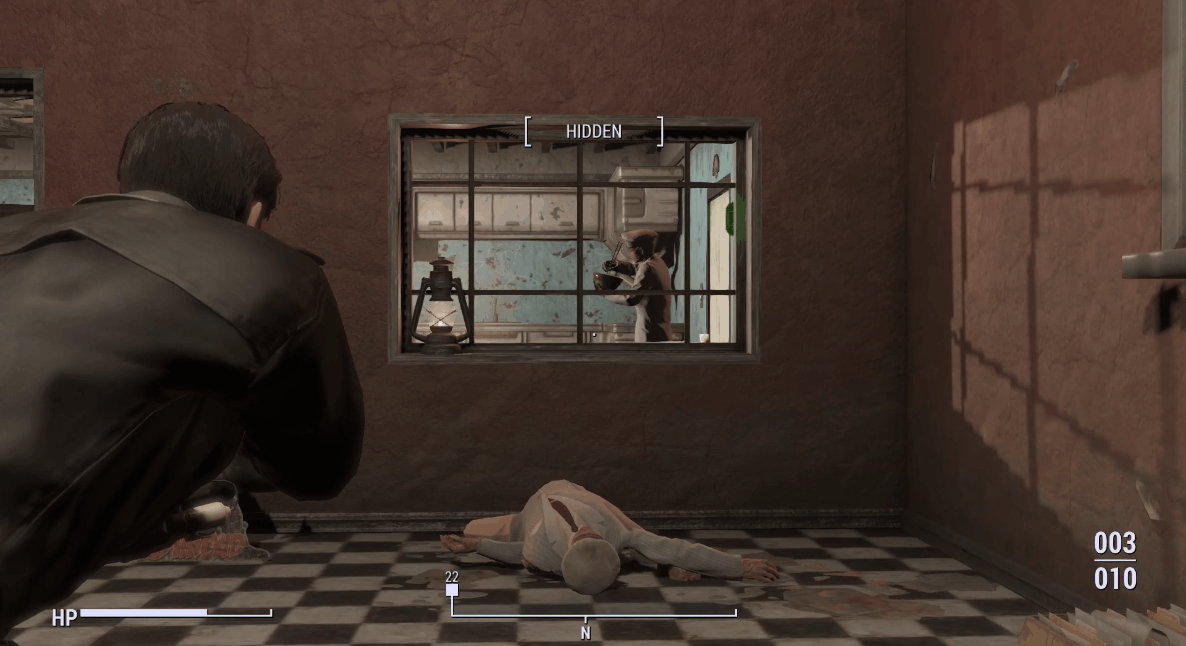
o Use arrow textures to point out the right direction
I utilized arrows in various locations to indicate the next direction or path to follow.

o Use color contrast to guide the player
Here, I positioned the red vending machine at the exit of the gift shop room to draw the player's attention. Amidst the predominantly brown room, the red color stands out and immediately catches the player's eye upon entering.
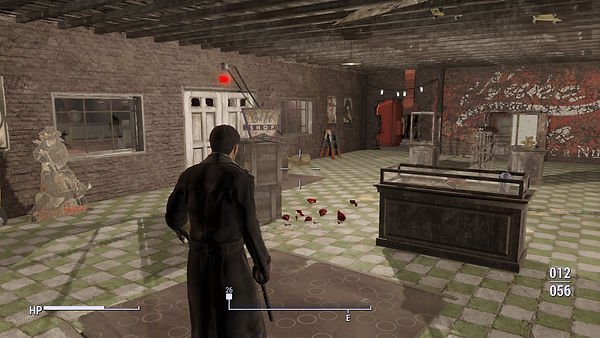
Linear flow and reuse space - How do I reuse spaces and control flow
o Use gates to keep a relatively linear flow
In a theater with a symmetrical structure, it can become quite open for players to decide where to go, potentially leading to confusion and getting lost. As indicated by the theater's map layout, players can opt for the left, middle, or right paths, making it challenging to regulate the flow.
Therefore, I locked the middle door and added obstacles to the left path, directing players to the right hallway and encouraging them to circle around to the central audience room.
o To maintain the level within the intended scope, I integrated the side quest into the same space as the main quest.
o Once the player retrieves the device from the basement, they will use the elevator to reach the center of the stage for the final decision and combat, effectively repurposing the theater space.

Multi-ways to progress - How do I support multiple ways to the player
o Get a hint by eavesdropping on the two guards chatting
I created a mini-scene involving two guards sitting near the door, chatting about the backstage being locked and the key being in the manager’s hand. This allows the player to receive this hint before reaching that area.
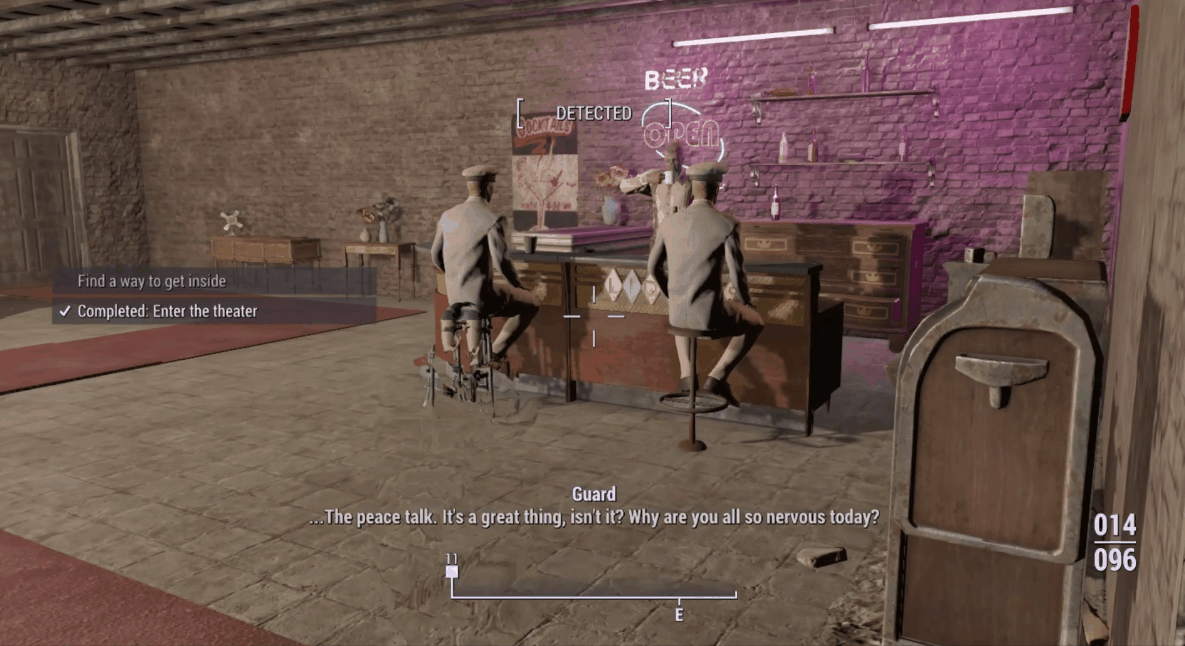
o Get the hint by picking up notes
If the player missed the eavesdropping scene, they could still find a note on the door when standing near the locked backstage door, revealing that the manager holds the key.

o Pass the first locked door through different ways
The player has the option to persuade the receptionist to open the door, pickpocket the password, or directly eliminate the receptionist to obtain the password and access the terminal.


Retrospective
WHAT WENT WELL
-
Cut the disguise mechanic on time
The Disguise mechanic started to make me feel painful around the early phase. It could make the player overly powerful, easily diminishing the challenge in the level. I am very thankful for the communication with my professor and the final decision to cut it at that time. -
Have a clear Aesthetic thought on the theater part
-
The theater has a clear definition and reference right from the beginning in the LDD, making it easier to implement, and the result is very close to what I had in mind.
-
Mimic the Fallout4 dialogue style
-
Captured some of the dark humor styles from the Fallout series.
WHAT COULD
BE BETTER
-
Too many mechanics making it difficult to focus on any one of themFor this level, I initially planned three mechanics: Disguise, Stealth, and Distract (originally using lights to attract feral ghouls). I underestimated how challenging it would be to combine them seamlessly. Each mechanic requires time for learning, reinforcement, and posing challenges, which could lead to either overlapping mechanics or insufficient time for interaction.
-
Having two interior spaces makes it over-scoped and exhausting to decorate in the end
At the very beginning, I thought that I didn't have too many rooms, and the structure was not very complex, so it would be fine to have two interiors. However, I overlooked that the iteration process would gradually add elements, making the structure of the building more and more complex over time.
WHAT
I
LEARNED
-
Every room should serve its own purpose, and the aesthetic should align with that
- Firstly, establish the function of each room as early as possible, preferably in the LDD.
- Secondly, apply basic textures to differentiate various rooms even in the WB milestone. The white box does not imply the entire level should be 'white.' Incorporating basic textures can aid in distinguishing different rooms and identifying issues in advance.
(For instance, if the basement's wall has a white concrete texture and the enemies there wear white suits, it may cause the enemies to blend into the concrete wall, making them less visible. This issue can be addressed earlier during the white box phase.)
- Thirdly, construct and decorate each room based on its designated setting. Envision the past and current state of the location and utilize the environment to narrate the story of what transpired there. Furniture and objects, whether decorations or cover pieces, should align with the given set-up. -
Make scope adjustment early
- It's better to have only one core mechanic and concentrate on making it deep and enjoyable rather than having too many. I often overlook how much can be added during development. If it is overly complex from the start, you will likely need to make substantial cuts due to time constraints. Nevertheless, it's always easier to add elements than to remove them. Always have a backup idea if the current one carries a high risk. Set a time limit for the current idea, and be ready to switch if it doesn't perform well.




